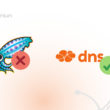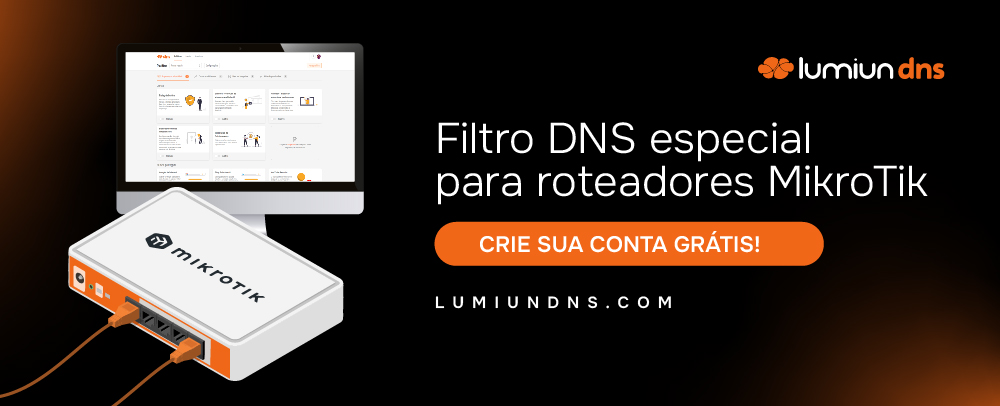Privacy and data security have value and price . After all, they can mean the salvation or perdition of small and medium -sized companies, when it comes to data leakage and other security incidents.
What determines the position in the sky or corporate hell is whether or not they invest to minimize risks and vulnerabilities. After all, prevention and protection against data leakage in the company are essential and are priceless.
The difference between success and failure may be just one click away. Undoubtedly, investing in technology and simple, efficient and affordable solutions and data privacy in the company is the best decision .
On the contrary, indecision leads to inertia and nowhere. In any case, postpone the necessary attention against security incidents and not adopt security and data protection compliance policies and processes only have two explanations: misinformation or neglect .
The consequences can lead to the end of any small and medium -sized company. A very high price, for sure.
What is coming?
The expansion of risks and cyber threats from 2022 is a consensus among cybersecurity experts. What confirms the information and the warning we brought in the previous article on data leakage. The worst is yet to come.
The largest number of digital privacy violations in Brazilian history in 2021 signals that we will see the growth in the number of virtual threats and the highest risk of data leakage in companies from 2022 .
Therefore, we focus so much on the relevance of information , prevention and investment in solutions, technologies and security systems . Since the lack of these conditions is what makes data leakage in companies one of the most frequent security incidents .
The purpose is to share information so that entrepreneurs, IT professionals and managers know that, although serious, prevention against data leakage is possible .
Above all, because knowing more about risks and threats, adopting good practices and investing in technological solutions and tools , can still generate other advantages and benefits , such as:
- adequacy to LGPD ( General Law on Personal Data Protection ) and the rules of the National Data Protection Authority (ANPD);
- more security;
- cost reduction; and
- increased productivity and profitability.
What are the news and trends regarding data leakage in companies?
Although more areas and IT aspects are targeting companies of all sizes, one of the priorities common to all companies is data security .
In this sense, today we will bring data and insights on the future of information security in companies to combat data leakage and other types of security incidents.
In order to better fulfill this purpose, we summarize or reproduce sections and information surveyed . At the end of each block, we will share a link to access to the full content.
Let's start with two articles from Forbes Brasil Incognia ebook . In these materials, we can see how much security and privacy is literally expensive .
Just to illustrate, the information reinforces and confirms the need for attention to passwords in passwords and the identification and digital authentication of users . Issues we dealt with in a recent article on data leakage in companies.
Biometric digital identity to replace passwords
Idtech Unico was worth more than $ 12 billion after “tokenize” the digital identity. With over 9 million transactions already made, the biometric token intends to make financial transactions safer.
Certainly, a welcome and necessary technology, as the number of PIX user data leaks has been very constant.
The biometric token has four times reduced the chances of a consumer giving up a process before reaching its end.
Here, the real value for companies: increasing the number of sales. The tendency is that the increase in the number of people with digital identification in Brazil could raise by 3% Brazilian GDP by 2030, according to a study by McKinsey Digital.
Also, another strong tendency is that several governments are changing to digital identity. Countries that have made the change argue that the model offers better experience for citizens, companies and public entities.
According to World Bank worldwide, there are about 1 billion people who do not have any form of identification. In Latin America, only 33.8 million are digitally identified. The total average damage to data leakage by 2020 reached US $ 3.86 million. In addition, Brazil is the second country in the world with more identity fraud and 6.3% of transactions in the country come from identity spoofing (when someone assumes someone else's identity to commit fraud).
Increasingly difficult cyber risk management
The fraud prevention methods that will be less effective are:
- those based on static information;
- The identity verification in onboarding;
- the validation of address with document proof of residence;
- the bond of bonding of variables informed by customers (CPF, email, telephone, zip code);
- The identity verification by call centers attendants;
- Facial recognition without liveness detection (by photo);
- the single passwords by SMS;
- the passwords in general; and
- Knowledge Questions-Knowledge-Based Authentication (KBA).
After 2021 data leaks, all these prevention methods were highly compromised.
Above all, because fraudsters have a number of personal information and data that, combined with social engineering practices, make more vulnerable and often insufficient current identity authentication methods.
The bet is the evolution of technology to make the processes of authentication of the identity of user, employees and customers.
A process that was already occurring, but was accelerated by recurrence of data leakage in companies and government agencies and institutions , especially those of 2021.
Companies are giving priority to ease of use and safety. That is, new fraud prevention methods must offer and prove high levels of complexity and difficulty being circumvented.
Data leakage immunity
Just to illustrate, one of these new methods is location behavioral biometrics . According to Incognia, this technology is immune to data leakage .
When using the moving signal signal force and moving sensors , it builds a fingerprint location fingerprint for each user based on location behavior, which is unique.
This information is encrypted, hasheada (summarized). Thus, they allow real -time verification and authentication of reliable users and detection of fraudsters .
As a result, it makes it possible to increase revenue by a more effective process of approval of legitimate clients. In addition, it reduces costs associated with fraud and manual revisions.
Again, the real value of technology for companies: increasing sales number and reducing costs.
According to its technology, the opening of new retail bank accounts increased by 52% automatic approval . In fintech app, it reached 99.9983% assertiveness in the login approval process.
The end of static data improves information security
When static data leaks, there is nothing else to do. Therefore, they are widely used by fraudsters, since prevention methods that use static data have lower efficacy and protection.
This is why unprecedented leaks, such as those registered in Brazil in 2021, will radically change the way companies and governments treat security and fraud prevention tools .
Static data present more fragility , since, in possession of fraudsters, they cannot be changed and at the same time, there is no way to ensure the legitimacy of who is providing such information.
Dynamic data is more reliable as they are harder to copy and tamper. When they are based on behavior, they are constantly updated according to the location profile and users' activities.
Privacy by Design walks along with LGPD
The evolution of the subjects related to privacy and digital security puts in perspective advances with the General Data Protection Law (LGPD) and the acceleration of regulatory activity in Brazil , through the National Data Protection Authority (ANPD) .
In a recent interview with Forbes Brazil, Adriana Aroulho, CEO of SAP Brasil, stressed that the corporate agenda, in 2022, has data security as one of the priority items .
"Of course, the way companies deal with the data has changed and is on the agenda ," said the executive.
Companies are incorporating new practices, processes, and management concepts that include privacy and security as a priority , adds Yasodara Cordova, Unico's main private researcher.
“Large companies already research and develop technologies for more privacy for users. In addition, a silent revolution from startups, privacy techs - who develop cutting -edge solutions in privacy and offer large companies ,” he explains.
But what is privacy by design?
According to Yasodara, Privacy by Design is a concept that “integrates considerations about privacy since the beginning of product development, services, projects, processes, practices, technologies and infrastructure. The goal is to ensure privacy and allow individuals to have control over their personal data , which consequently gives organizations that adopt methodology”.
The concept has already given rise to a new technology industry, Privacytech. A niche market that should grow more than 40% by 2028.
The impact of LGPD on data culture
When the theme is the General Data Protection Law (LGPD) , companies are still adapting and mapping Privacy Gaps. Privacy and security are now part of any business beyond the legal obligation. Those who do not seek knowledge and innovation in this area will gradually be replaced.
LGPD has brought greater legal certainty on data processing as it provides mechanisms for the holder to have greater control over which data is collected and how it is used.
The law leveled the field so that everyone had a starting point in privacy. The challenge is to go beyond regulation and offer privacy as a competitive differential.
Cryptography is the future of privacy and the great foundation to go beyond LGDP in companies.
Trends and main challenges in cybersecurity
Companies that are certainly protected, are certainly aware of news, trends, new threats and tools for managing and controlling more advanced internet access and security .
The main challenges and trends in cybersecurity are:
- Expansion of the threat scenario;
- scarcity of skills and cybersecurity experts;
- Regulatory Compliance;
- Increased social engineering attacks;
- Focus on cloud vulnerabilities;
- Increased Zero-Trust network adoption; and
- 5G update and IoT security.
Cyber attacks have affected companies' reputation and revenue. Therefore, it is important to promote a security culture and incorporate it into each process .
Entrepreneurs, IT professionals and managers should be aware of cyber security trends and work to maintain security in their companies.
10 Trends in Safety and Cyber Risk
In addition to the well -known cyber threats, new cyber risks and security challenges will be present in 2022. Here are some of the main trends.
1. Ransomware attacks
Ransomware , resulted in major losses to insurers and organizations worldwide.
2. Acceleration of the regulatory activity of safety incidents
Internationally, 2021 saw China's Personal Information Protection Act into force, penalties in Brazil's General Personal Data Protection Law became applicable and the final decision to implement the EU on standard contractual clauses.
The size and scope of regulatory activity will probably continue to increase. From 2022, we will see the introduction of new regulations, as well as changes, support regulations, adjustments and warnings related to many of these recently promulgated laws.
3. Challenges of the cloud service
As more companies and processes migrate to cloud -based solutions, cybercriminals will look for ways to explore and infiltrate.
However, moving to a cloud -based solution does not mean that companies fail to deal safely.
It is an inappropriate thought. Although a cloud provider offers some security, it is still up to the companies to adopt additional security measures.
4. increasing threats of operational technology
With the acceleration of digital transformation, came the convergence of operational technology (TO) and Information Technology (IT). Now hardware and computer software are used to manage equipment and operating systems .
Vulnerabilities in TO environments cannot be neglected or ignored. After all, strategic infrastructure sectors depend strongly on to (energy, industry, manufacturing, logistics, oil and gas, telecommunications and public services management).
5.
Attacks directed against various supply chains create great turmoil. Despite reaching a large organization, they result in substantial destruction because many others depend on the target organization.
Cybercriminals will continue to implement this strategy, which has proven to be very lucrative - supply chain interruptions will continue throughout 2022.
6. Cyber security talents are missing
Recruit and retain the best cyber security professionals to face the challenges presented by the current scenario of cyber threats will certainly be a significant business challenge from 2022.
In 2021, there were about 4.19 million cyber security professionals around the world . An increase of more than 700,000 compared to 2020, according to the 2021 CyberSecurity Workforce Study of the International Information System Security Certification Consortium.
Despite this rapid growth in cyber security workforce, the study also notes that "global demand by cyber security professionals continues to surpass offer .
In addition, cyber security is no longer a risk of information technology or information security - it is a risk of corporate governance.
7. Confidence in machine learning and artificial intelligence
While many companies have begun to adopt the use of automated solutions, others invest in artificial intelligence and machine learning to support operational and business functions. Part of this seems to be driven by the Covid-19 pandemic .
Although automation and machine learning have existed for some time, they are relatively new technologies. Therefore, problems with coding, incorrect configuration, insufficient tests and conflicts with other systems and platforms may arise.
As more companies advance to automated solutions, cyber safety risks should be properly and effectively managed.
8. Cybersecurity improves consciousness and culture against data leakage
It is difficult to quantify cybercriminous damage in recent years. But the negative impact these attacks had on individuals, companies and public entities is immense.
On the other hand, a positive impact of the current cyber risk environment is greater awareness of the need for attention, risk management strategies and business resilience.
In a 2021 survey, Gartner found that 88% of corporate advice now see cyber security as a commercial risk .
9. More collaboration to avoid data leakage
The digital and digitized world has been historically considered a IT problem. But a recent report published by JP Morgan International Council noted that "cybernetic is the most dangerous weapon in the world - political, economic and militarily."
So combat and mitigate risks and data leakage can only be performed with shared responsibility between companies, employees and customers.
10. Security Incident Insurance Market
Insured and potential insurance buyers can expect the cyber insurance market to remain tense by 2022.
Because the high frequency and substantial severity in claims such as data leakage, along with greater legislative and regulatory inspection activity, caused cyber insurance markets to require certain minimum controls for insurance qualification, capacity coverage and limits reduction.
As the understanding of the causes of the insurers deepens, the subscription requirements will evolve. However, the requirement for strong controls will not change , even if we can see prices start to decrease at the end of 2022 or at some time of 2023.
The price and value of solutions and technologies against security incidents
The way each company treats sensitive, confidential or personal information under its responsibility and protects it against data leakage is a differential that makes it preferable (or not) for customers and users .
Digitally secure companies are more productive and profitable . Undoubtedly, they grow more and stand out from the competition. In fact, an invaluable value in an increasingly competitive scenario .
Vulnerable and unprotected companies , where there are no policies and processes to avoid or deal with data leakage, no doubt, they take great risks and become preferred targets for cybercrime .
Exactly for this reason, it is curious to realize that entrepreneurs, IT professionals and managers still leave their companies at risk . True incubators of all kinds of security incident. After all, we have seen that most of the time, data leakage is not intentional, but has the human factor as a key element .
For sure, after this initial explanation, it is easier to understand the price of misinformation and unpreparedness and the value of prevention and protection against data leakage .
The main benefits of data leakage prevention
Information and prevention are keywords against data leakage . To avoid damage and safeguard the reputation, companies need to be prepared.
A process that does not need to be difficult or complex. Once the market offers simple, useful and affordable solutions.
Undoubtedly, preventing security incidents is more efficient when management and control of internet access is an ally of information security and compliance processes against data leakage .
In practice, in addition to prevention , the best solutions in the market productivity and profitability indicators . Just search and compare.
Lumiun Box is excellent for preventing data leakage. Click here and find out how it can help your business. Certainly, it is the solution that offers the most effective differentials and facilities against data leakage.
Subscribe to our newsletter and receive more news and materials.











